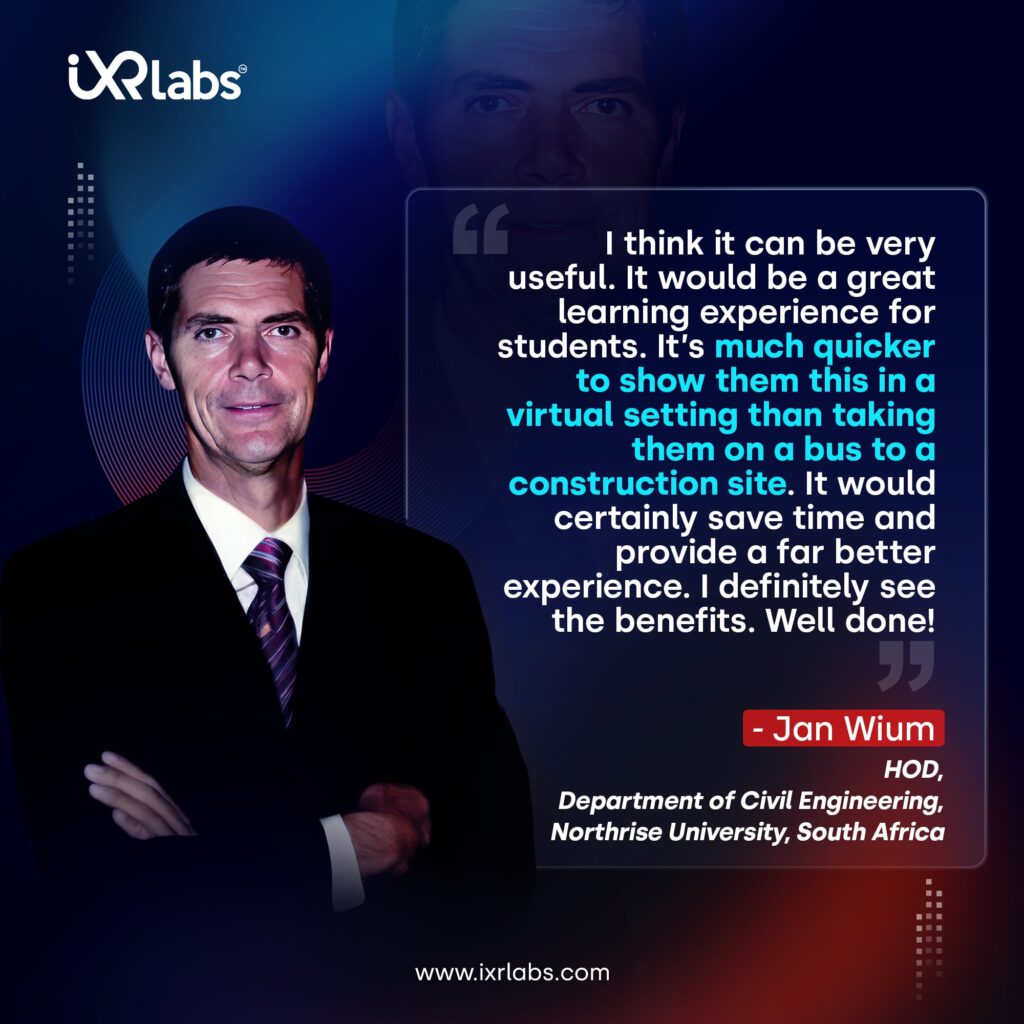VR Engineering: Transforming How Engineering Students Learn, Apply, and Innovate
Engineering education is undergoing a radical transformation—and VR engineering is at the heart of it.
The days of depending solely on textbooks, 2D diagrams, and limited physical labs are fading. In their place, immersive and interactive virtual reality environments are allowing students to experience engineering principles like never before.
For institutions in the U.S. looking to upgrade how they teach core STEM subjects, VR for engineering is more than just a tech trend—it’s a long-term investment in experiential learning.
What is VR Engineering in Education?
VR engineering refers to the use of virtual reality technologies to teach engineering concepts through simulated, interactive environments. Instead of imagining the internal components of a turbine or visualizing the stress-strain curve of a material, students can now see, interact, and experiment in real time—inside a VR headset.
This not only increases engagement but also drastically improves understanding and retention of complex technical content.
Why the Shift? The Challenges with Traditional Labs
Traditional engineering labs have served academia well, but they come with inherent limitations:
- Cost: Physical equipment is expensive to purchase and maintain.
- Safety: Many processes in mechanical, electrical, or chemical engineering are too dangerous for beginners to attempt hands-on.
- Space & Access: Not all students can access labs equally, and lab timing restrictions limit repetition.
- Scalability: With growing class sizes, it’s difficult to offer individual hands-on time to every student.
In contrast, VR engineering labs are reusable, safe, scalable, and cost-effective in the long term. A single module can serve hundreds of students without wear and tear or risk of injury.
How VR Is Reshaping Engineering Classrooms
Let’s break down how VR for engineering is being adopted across different disciplines:
1. Mechanical Engineering
- Simulations for Universal Testing Machines, Brinell Hardness Tests, and Torsion Tests
- Real-time visualizations of gear mechanisms and fluid flows
- Thermal and structural stress analysis in virtual environments
2. Electrical & Electronics Engineering
- Interactive circuit design and debugging in 3D
- Virtual simulations of PLC, SCADA, and power grid setups
- High-voltage training without real-world danger
3. Civil Engineering
- Virtual site visits to bridges, dams, and smart cities
- Load testing and stress simulations on structures
- Step-by-step VR-based construction sequence walkthroughs
4. Aerospace Engineering
- VR-based jet engine exploration and assembly
- Virtual wind tunnel simulations
- Weight distribution and flight dynamic modeling
In each case, students are not just learning—they’re experiencing engineering.
Results That Speak for Themselves
According to research published by PwC, VR learners were 4x faster to train than classroom learners and 275% more confident to apply what they learned.
Educators in U.S. institutions report similar benefits:
“Before VR, my students couldn’t grasp the full functionality of a lathe machine. Now they operate it virtually and understand every detail of its mechanism.”
— Prof. Lisa Howard, Manufacturing Engineering, Ohio
“The dropout rate from core mechanical courses dropped by 30% after integrating VR modules. Students now find labs exciting, not intimidating.”
— Dr. Aaron Stein, Georgia Tech
These outcomes aren’t limited to elite schools. Even community colleges and mid-sized technical institutes are starting to see the potential of VR to equalize access and improve skill-building.
Improved Retention and Engagement
VR is not just a gimmick—it’s a proven learning accelerator.
Students who learn via immersive platforms retain 75% more of the material compared to those taught through traditional methods. By combining visual, auditory, and kinesthetic inputs, VR ensures better encoding of information.
Additionally, learners are more likely to explore, repeat, and self-correct their mistakes in a virtual environment, leading to deeper understanding and more independent learners.
Why U.S. Institutions Are Rapidly Adopting VR Engineering
With an increasing focus on industry-readiness and employability, many colleges in the U.S. are adopting VR for engineering to:
- Align their labs with Industry 4.0 standards
- Reduce operational costs over time
- Offer hybrid and remote lab access
- Attract top talent and increase program appeal
Government grants and industry-academic partnerships are also encouraging the use of immersive technologies in STEM programs.
Looking Ahead: The Future of VR in Engineering Education
The next step in VR engineering involves integrating AI-based tutoring, digital twins, and collaborative VR environments where students and professors can co-experience labs remotely. As 5G and edge computing become mainstream, VR will evolve from a standalone tool into a connected, AI-powered learning ecosystem.
A Smart First Step: Start With Modular VR Labs
Institutions don’t need to overhaul their entire infrastructure to benefit from VR. Starting with modular simulations—like a virtual universal testing machine or an electrical circuit board—can give departments a quick win and measurable improvement in learning outcomes.

Explore Our Ready-to-Deploy VR Engineering Labs
If you’re an academic decision-maker or program head looking to upgrade your engineering curriculum, iXR Labs offers a suite of curriculum-aligned VR modules tailored for mechanical, civil, and electrical engineering.
✅ 150+ modules across disciplines
✅ Cross-device support (Meta Quest, PCVR, browser)
✅ Backed by educators across the USA, UK, and India
VR engineering is not the future—it’s happening now.
Equip your students with the tools they need to succeed in a tech-driven industry. Help them go from concept to comprehension—faster, deeper, and smarter.

